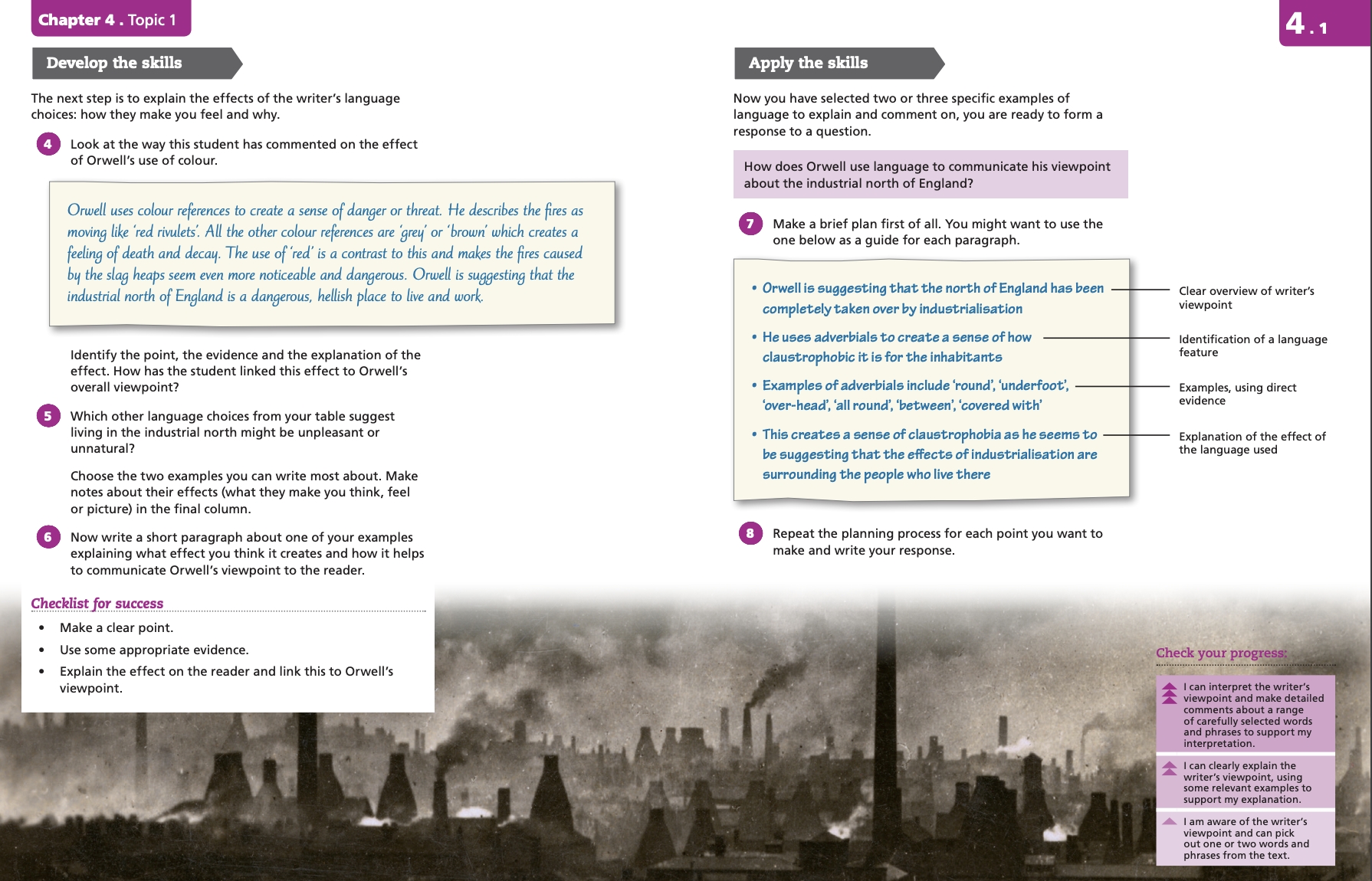› Forums › 2023 Summer Intensive Courses › EnglishLiterature-GCSE-Wed
- This topic has 73 replies, 11 voices, and was last updated September 2, 2023 by
Beth.
-
AuthorPosts
-
-
at 12:33 #33445
Beth
ParticipantSummary for Lesson 1
In today’s class we began with our literary analysis course, thinking about the key concepts needed in order to fully get under the layers of literature. We began with a fantastic discussion of what we are looking for when we analyse literature, digging under the surface of the text to understand what the author wants us to see of their worldview. We completed a picture task to demonstrate the difference between summary and analysis before completing some close textual analysis on a passage from George Orwell, with which the students were wonderfully perceptive. We thought about the use of language, techniques, structure and connotations and how we can weave these ideas together to create wider arguments about the author’s purpose and ways of thinking. Fantastic work today class, well done for all your insightful comments and ideas throughout. Really excellent everyone, keep up the brilliant work 🙂
Here is the link for the homework paper, remember you are only answering Question 4. The passage is on page 22 of the PDF:
https://revisionworld.com/sites/revisionworld.com/files/imce/1EN0_01_que_20201103.pdf
Homework
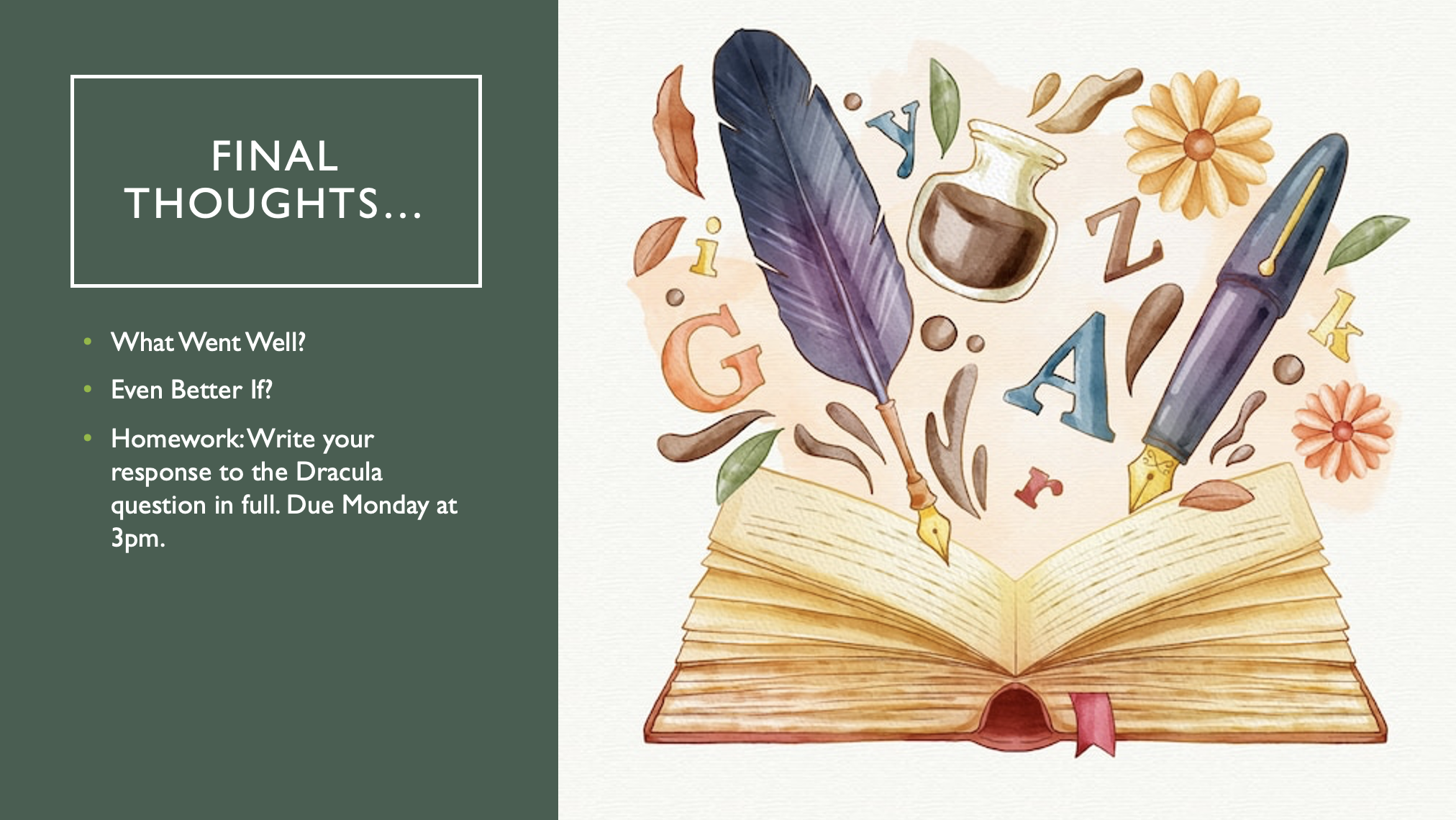
Attachments:
You must be logged in to view attached files. -
at 14:14 #33453
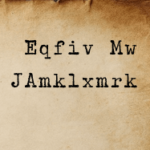 AmberParticipant
AmberParticipantDear Beth,
Thank you for the absolutely thrillaxing lesson! I have uploaded the homework to the drive 🙂 😉
——————————————————————-
The Comprehension and Analysis Trinity
C is for Character
Though don’t go over-acter
R is for reader
Curled up like a leader
A is for Author
Autonomy itself
And most of all the hand that guides
Wily, twisting, snaking plots
-
at 14:56 #33457
Bowen
ParticipantThanks for the lesson!!! I have pasted my answer below🐳🐳🐳🐳🐳🐳
The attempt to create a suspenseful atmosphere is very much successful due to a number of ways. The story is set in an old castle, with the story starting off with the owner warning the narrator about potential dangers. Firstly, the owner of the place seems to foreshadow the danger upcoming, with his warning that “ should [the narrator] leave these rooms [they] will not by any chance go to sleep in any other room.” He states all of the queer and sinister things about the place in his warning as the reader, we feel the uneasiness portrayed by these words. The reader wonders why they are giving these warnings? This place must be risky to stay in. After this, further on in the story, the speaker felt like they were “indeed in prison.” This makes the place feel very restricting, as if it were a monster and trapped its prey within its walls. The reader then worries for the teller’s safety, further heightening the sinister atmosphere around the place. We could imagine a fly being consumed by a venus flytrap. Stuck, with no way out. Continuing on, we can see the amazing expanse of beauty beyond the prison of a place. “The soft light of the distant hills became melted, and the shadows in the valleys and gorges of velvety blackness. The mere beauty seemed to cheer me.” This quote backs up my point, as it represents the extreme beauty of nature beyond the grisly walls of the “prison.” This creates a strong contrast between the sinister atmosphere at the castle compared to the pretty landscape that can even make the “prisoner” feel better, despite being stuck in the wretched place. This makes the reader feel a small sense of relief which helps to ease the stress caused by the previous through events in the story. At least beyond is beauty and safety. Finally, the storyteller “[starts] at [their] own shadow,” showing all of a sudden, they became super jumpy to things even as harmless as a shadow. This shows their heightened sense of insecurity, suggesting the area around her is uncomfortable for them, which is absolutely true. This makes the reader feel as insecure as the narrator, worrying what may happen next to them.
-
at 21:56 #33645
-
-
at 20:01 #33465
Alice
ParticipantHi Beth!
Thank you so much for the amazing lesson! I have attached my homework for this week.
Attachments:
You must be logged in to view attached files.-
at 22:03 #33647
-
-
at 16:54 #33496
Amy
ParticipantDear Beth,
Many thanks for the lesson. Please find my homework attached 🙂
-
at 21:57 #33523
Brian
Participant-
at 22:09 #33649
-
-
at 08:16 #33613
-
at 12:33 #33617
Charlie
ParticipantDear Beth,
Thank you very much for our lesson last week. I have attached my homework below – and would like to apologise for the late upload.
Charlie
Attachments:
You must be logged in to view attached files.-
at 22:23 #33655
-
-
at 00:05 #33661
Ren
ParticipantHi Beth this is Ren,
Thanks for the lesson and sorry for the late homework. (not sure if i submitted it twice)
-
at 05:45 #33662
jodie
ParticipantHi Beth,
Thank you for the amazing lesson last week. Also sorry for the late homework since I didnt have the username/password to log in to submit my essay to you.
Attachments:
You must be logged in to view attached files.-
at 12:53 #33717
-
-
at 12:30 #33666
Beth
ParticipantSummary for Lesson 2
In today’s class we continued our study of GCSE analysis, thinking about techniques and structure in depth. We began by discussing a mark scheme for last week’s homework before moving on to thinking about the importance of specificity in language and why we should ban the word interesting in analysis. We learned about the techniques of metonym, synecdoche and reference, unpicking the impact on the reader. We then focused on structure, analysing a piece from a play and thinking about how it captures the audience’s attention. Finally, we discussed how structure is presented in prose through sentence length, layout, repetition, contrast, openings etc. Lovely work today everyone- we covered lots of new topics and you all analysed these fantastically, thinking deeply about association and connotation. Well done and see you next week 🙂
Watch this video if you can to help with structural techniques: https://www.youtube.com/watch?v=6zXBiAuPQ_Y
Homework
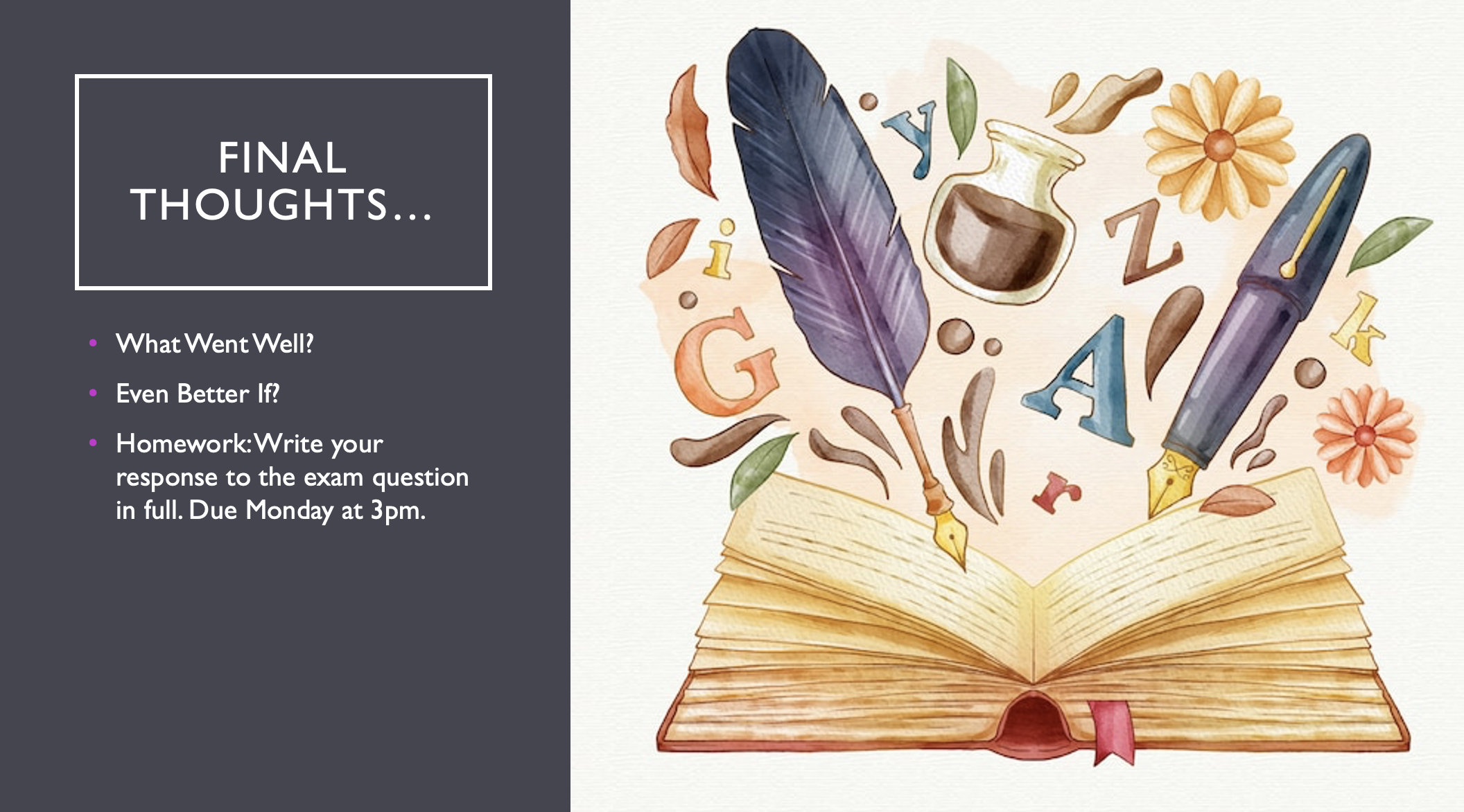
Attachments:
You must be logged in to view attached files. -
at 14:05 #33676
 AmberParticipant
AmberParticipant<audio class=”audio-for-speech”></audio>
<div class=”translate-tooltip-mtz translator-hidden”>
<div class=”header”>
<div class=”header-controls”>Translator</div>
<div class=”header-controls”></div>
</div>
<div class=”translated-text”>
<div class=”words”></div>
<div class=”sentences”></div>
</div>
</div>
Dear Beth,
Thank you for the stupendous lesson! I have uploaded my homework.
——————————————–
A Child’s GCSE Alphabeta.
S.
S is for Structure
and the Skeleton of the blobfish
that stops your piece from becoming
like a pudding dished
up for all
-
at 13:12 #33828
Beth
ParticipantHey Amber-
Haha I love the blobfish/ structure crossover poem- really creative imagery! I’ve uploaded your feedback, just accidentally did it from the wrong gmail account so let me know if there’s any problems with accessing it! Wonderful work this week, well done 🙂
-
at 15:49 #33884
 AmberParticipant
AmberParticipant<audio class=”audio-for-speech”></audio>
<div class=”translate-tooltip-mtz translator-hidden”>
<div class=”header”>
<div class=”header-controls”>Translator</div>
<div class=”header-controls”></div>
</div>
<div class=”translated-text”>
<div class=”words”></div>
<div class=”sentences”></div>
</div>
</div>
<audio class=”audio-for-speech”></audio>
<div class=”translate-tooltip-mtz translator-hidden”>
<div class=”header”>
<div class=”header-controls”>Translator</div>
<div class=”header-controls”></div>
</div>
<div class=”translated-text”>
<div class=”words”></div>
<div class=”sentences”></div>
</div>
</div>
HiyaReceived, thank you 🙂 for your marking
Cheers!
-
-
-
at 15:02 #33677
Alice
ParticipantHi Beth!
Thanks for the incredible lesson! I have attached my homework for this week.
Attachments:
You must be logged in to view attached files.-
at 12:54 #33824
-
-
at 21:54 #33785
Amy
ParticipantHi Beth,
Please find my homework attached 🙂
Many thanks!
-
at 21:55 #33786
Amy
ParticipantNot sure if you can see it?
-
at 21:59 #33787
Amy
Participant.
-
at 22:01 #33788
Amy
ParticipantQ2 How does the writer use language here to describe the garden? (8 marks)
The writer describes the garden as mysterious, in the extract, the audience are introduced to Rosie making a “quick check of the unfamiliar garden” – to ensure it is safe for her children to play. The adjective “unfamiliar” highlights that the garden is a strange place; it is almost as if its owners are not fully aware of its compositions. This immediately distances the audience from the garden and its atmosphere. Furthermore, the wintry sun “threw long twisted shadows across the undergrowth”, the noun “shadows” conveys mystery due to its simple black colour. The blackness of a shadow further connotes possible dangers of the garden, alerting the audience of the undiscovered.
The writer also describes the garden as neglected. At the beginning of the extract, the bottom of the garden was “an overgrown mess” and following the garden, it disappeared “into a mass of nettles”. Both situations indicate large quantities of something else – in this case: trees and nettles. The audience gains an impression of the chaotic scenery within the garden, thus coming to the conclusion that it has not been taken care of for an extensive amount of time.
-
at 13:26 #33831
-
-
at 00:15 #33801
Charlie
ParticipantDear Beth,
Thank you very much for our lesson last week – please find my homework attached.
Charlie
Attachments:
You must be logged in to view attached files.-
at 13:34 #33835
-
-
at 17:32 #33850
jodie
ParticipantHi Beth,
Thank you for the lesson and please find my homework attached:)
Attachments:
You must be logged in to view attached files.-
at 12:34 #33974
-
-
at 22:28 #33852
Ren
ParticipantHey Beth,
thanks for the lesson again!
-
at 22:29 #33853
Ren
Participantnot sure why my homework isn’t sending
-
at 09:19 #33873
 Jiawei728Participant
Jiawei728ParticipantDear Beth,
Thank you for your fabulous lesson,
I am sorry I handed this late as I was somewhere else last week
In this extract written by Judith Allnat, for ‘The Silk Factory’, the author has in many ways to capture the reader’s attention, using various words, effective language and structural techniques, which creates a tense and suspenseful atmosphere.
Firstly, the writer introduces some unknown events straightaway at the start of the passage. She/He tells the reader of a ‘stranger’ child, which the reader does not know about, thus hooking the reader into the story. This has an ominous effect on the atmosphere of the story so far. Also, the author describes of a ‘trauma’ that took place ( a few days ago). This again creates suspense and an element of the unknown. Words such as ‘unfamiliar’ and questions such ‘where on earth has she come from?’also emphasises this. Furthermore, the author only tells the reader of partial information, for instance, that her face was ‘pale’ and ‘drawn with anxiety’.
Secondly, the author uses different techniques to outline different information which engages the reader. For example, the use of rhetonical questions asked by Rosie(to herself)-but how had she got in?- arouses curiosity in the reader. The author also describes the child’s movement as ‘furtive’, which makes the reader wonder for the reason for her behaviors. The descriptive language of the setting of the story also has a mysterious aura – the ‘ twisted branches’ and ‘malformed hand’. These words creates suspense and fear in the reader, and also the rising interest in the reader of the story.
Finally, the author tells of some unusual facts. For instance, the fact that the ‘stranger child’ coin climb pass the wooden fences, which , as Rosie had thought, ‘too high’ for a child to climb. Also, the strangers’ movement seemed to be almost non-human like ‘a darting mouse’. These strange information makes the reader want to know more about this child.
In conclusion, the author has effectively used a lot of different ways to cause interest in the reader throughout the passage, by means of technique such as lack of information and descriptive language.
-
at 12:56 #33980
-
-
at 11:21 #33876
Beth
ParticipantSummary for Lesson 3
In today’s class we focused on poetry, thinking about how it differs from prose and what skills we need to analyse it. We began by thinking about the unique features of poetry to focus on and how this can lead our analysis, before watching a video that featured a step-by-step guide to unseen poetic analysis. We discussed the poem from the video, thinking about what the poet said his intentions were and using this to think about the language and structure of the poem. We thought about poetic terminology (i.e., speaker instead of narrator) and then applied all these thoughts to an Edgar Allen Poe poem, with the class learning steps to apply to the GCSE exam in order to write strong arguments about the effect of poetry. Finally we looked at a list of poetic techniques and structural features which is on Slide 10 of the PPT for the class to use, and I introduced the class to five GCSE unseen poems which they can use to help practice thinking deeply about poetry. Some great ideas today class, well done and keep up the amazing work. See you next week 🙂
Video from today, watch the rest if you can: https://www.youtube.com/watch?v=L4NjW_V9Fbk&t=238s
Homework
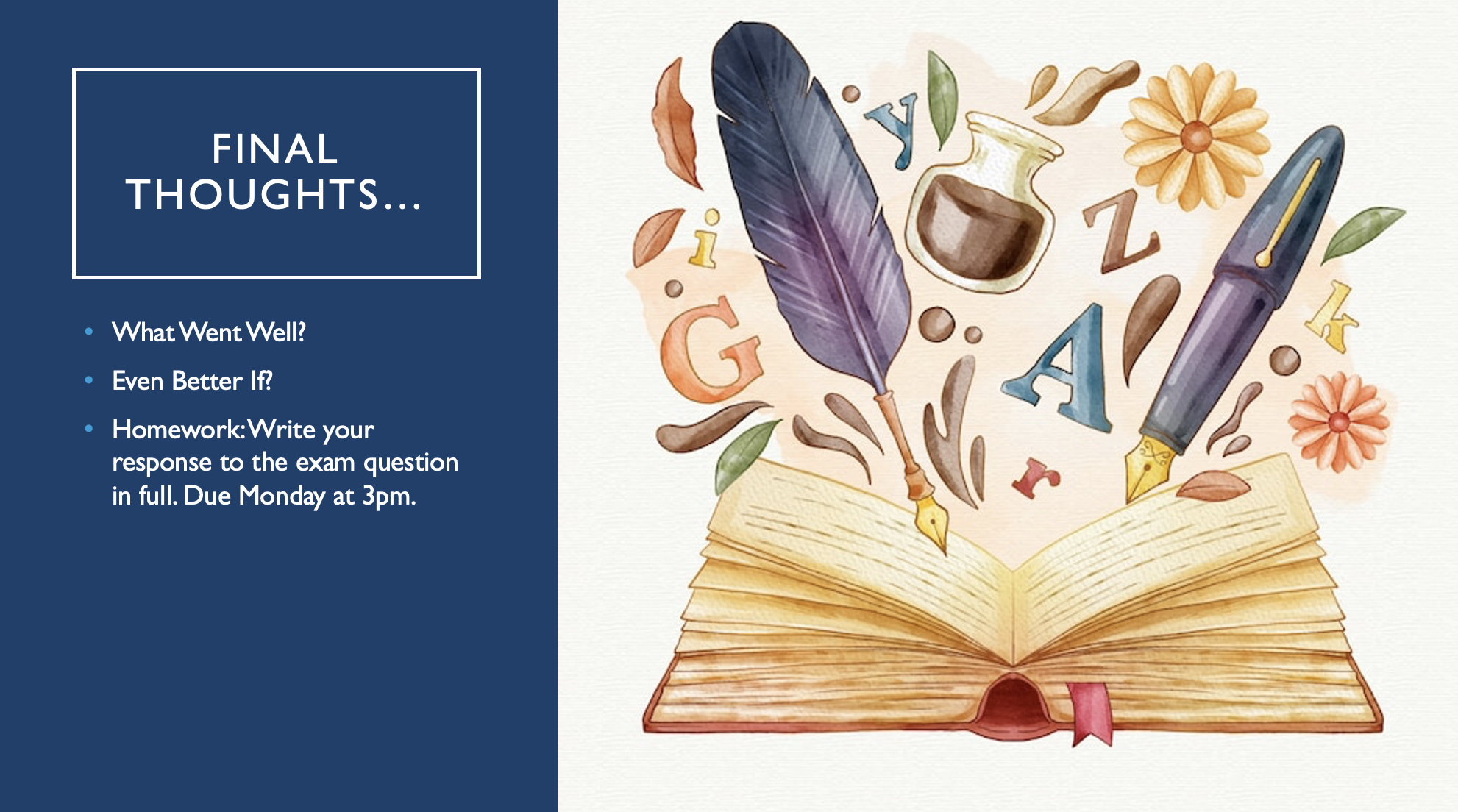
Attachments:
You must be logged in to view attached files. -
at 11:52 #33879
Alice
ParticipantHi Beth!
Thank you for the lesson today! I’ve attached my homework for this week.
Attachments:
You must be logged in to view attached files.-
at 16:05 #33982
-
-
at 13:04 #33883
 AmberParticipant
AmberParticipantDear Beth,
Thanks for the delisheracious lesson!
Anonymous Note BY ME ( (c) me)
I note that
I have
Upped
the homework
to the
THING
that is a rainbow
in flourescent type
-
at 10:25 #33949
Brian
ParticipantDear Beth,
Please see the homework attached below.
Have a nice day!
kind regards,
Brian
Attachments:
You must be logged in to view attached files.-
at 16:11 #33984
-
-
at 11:19 #34067
Beth
ParticipantSummary for Lesson 4
In today’s class we focused on theme, an important place to start when considering the ways in which writers construct a piece. We spoke about how theme differs from moral or message and discussed what themes are likely to come up in the GCSE exam. We then analysed a GCSE passage by George Eliot, digging into the themes in the passage and what they reveal about the author’s worldview. The class then wrote topic sentences, exploring how a focus on themes in their paragraphs can help them to structure their arguments. Finally, we went through a five-step process for literary analysis and opened the floor to questions on next week’s mini-mock. Lovely work today class, well done for your tightly focused theme analysis and ideas around the passage we read. See you next week 🙂
Theme in literature video: https://www.youtube.com/watch?v=I5KZcdAmWLw
Homework
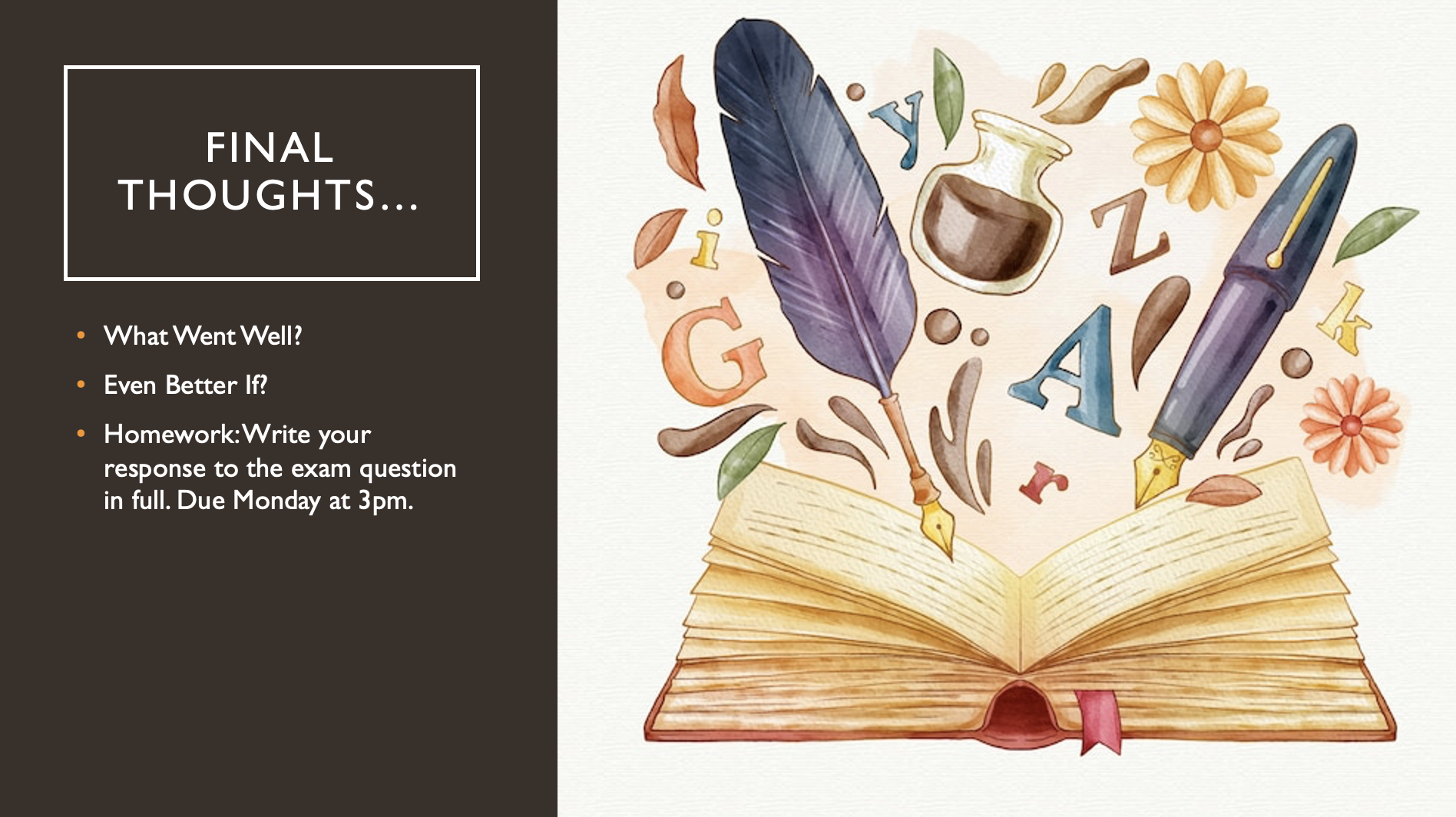
Attachments:
You must be logged in to view attached files. -
at 12:35 #34072
 AmberParticipant
AmberParticipantDear Beth,
Thanks for the frabjulous lesson! (did I just reinvent Lewis Carroll? I think not) I have uploaded the you-know-what [I guess I’ve reverted to using harry potter fandom terms fo slow-loading appliances] 🙂
-
at 09:55 #34081
Alice
ParticipantDear Beth,
Thank you for the lesson! I’ve attached my homework for this week.
Attachments:
You must be logged in to view attached files.-
at 09:57 #34209
-
-
at 17:59 #34090
Emma
ParticipantBeth, Here’s my homework from the past few weeks.
2/8/23
Suspense is successfully created by the addition of pauses and careful choice of words. This is shown from the phrase “my dear young friend—nay”. The dash used creates the sense of tension between the two characters as Dracula says “a dear young friend” but then almost immediately he says “nay” meaning that he disagrees with Jonathan being a “friend”. This shows that he thinks that the Count is hiding something from him especially what was in the huge castle as he warned Jonathan with all seriousness that he should not wander around.
9/8/23
The writer uses long sentences with many commas to show the endlessness of the garden. This is shown by the sentence “The path that led down towards the fence at the bottom, which marked the garden off from an orchard beyond, disappeared into a mass of nettles and brambles before it reached the padlocked door.” This sentence is describing the garden as unkept due to the “mass of nettles and brambles”. Endlessness is shown by the word “disappeared” as it is hidden from the view of people.
16/8/23
How does Edger Allen Poe present time in “A Dream within a Dream”?
Edger Allen Poe presents time in the poem “A dream within a dream” by implying the fact that time is slipping away from us humans, showing that we are coming to an end. This is shown by the phrase “Through my fingers to the deep” which is implying that time is running through our fingers.
As the poem ends, the poet asks only one question to the reader – what if the reader wakes up and realizes that all that he has gone through, the good and the bad, was nothing but a dream within another? If readers have heard of the saying – what if we wake up and realize that we were just dreaming, all this while – then they surely understand this poem in a much better way. What if we open our eyes and realize that we had just been dreaming, all this while, and the reality begins after we wake up?
-
at 09:58 #34211
-
-
at 00:19 #34108
Charlie
ParticipantDear Beth,
Thank you very much for our lesson last week. I would really like to apologise for sending in my homework this late – unfortunately, I failed to complete it before I went on a residential holiday camp – and was unable to use my phone to complete my homework. I’ll definitely make sure to watch this week’s video replay and get my homework for Lesson 4 in as soon as possible.
Charlie
Attachments:
You must be logged in to view attached files.-
at 10:58 #34243
-
-
at 20:10 #34198
Amy
ParticipantHi Beth,
Here is my homework, thank you for the lesson.
Amy
-
at 20:12 #34199
-
at 10:59 #34247
-
-
at 10:30 #34382
Beth
ParticipantSummary for Lesson 5
In today’s class we completed our mock exam, thinking about putting to use all the skills we’ve studied over this course and consolidating our knowledge of GCSE analytical skills. Well done everyone for all your sophisticated and original analysis that you have shared over the past five weeks. It has been wonderful to dig into the deeper meaning of language with you all and I have been very impressed with your passion and drive in the subject- I can’t wait to read your mocks! Keep up the amazing work and I’ll see you all soon 🙂
Homework

Attachments:
You must be logged in to view attached files. -
at 11:07 #34384
-
at 11:07 #34386
 AmberParticipant
AmberParticipantHi Beth
I have uploaded my mock 🙂 Thanks for the delish lesson! Have a splendid rest of your week.
-
at 11:08 #34387
-
at 11:10 #34389
Emma
ParticipantEnglish Essay
In this extract, there is an attempt to create Florence’s thoughts and feelings.
Evaluate how successfully this is achieved.
Support your views with detailed reference to the text.
The narrator demonstrates Florence’s thoughts and feelings from the use of a power. This is shown in LIne one of the extract,’sorrow, shame, and terror’.The word ‘terror’ suggests that she is frightened by her own actions while the words ‘sorrow’ and ‘shame’ show that she is also feeling regret and annoyance for running away from home. It is also shown in the simile ‘through the sunshine of a bright morning, as if it were the darkness of a winter night’. this shows the worry taking place in her as she goes running lost into London.
Also, the author conveys Florence’s emotions through a list of adjectives in the extract. Within line 30, the author writes, ‘and laid his rough, old, loving, foolish head against her breast’. This indicates the trustworthy and lovingness of the dog, Di, which implies that when Florence caught sight of him, she felt a ping of happiness in herself to keep going as she knew that she could always be protected by her dog.
Florence at the end of the extract is shown as having confidence in herself which is shown in the phrase ‘Florence, who had again quickened up her pace, as she approached the end of her journey, ran across the road’. The phrase ‘again quickened up her pace’ shows the excitement to see a safe place; this shows that she found a small lodging for her and Di to seek shelter.
Therefore, as expressed in the extract, Florence’s thoughts and feelings are successfully created by the language and literary techniques used by dickens.
Thank you for the amazing few lessons in the past few weeks!!
-
at 11:11 #34390
-
at 22:16 #34426
-
at 14:18 #34453
-
at 14:20 #34460
Beth
ParticipantHere is the mark scheme for you to look at too 🙂
https://revisionworld.com/sites/revisionworld.com/files/imce/1EN0_01_rms_20190822.pdf
-
-
AuthorPosts
- You must be logged in to reply to this topic.

